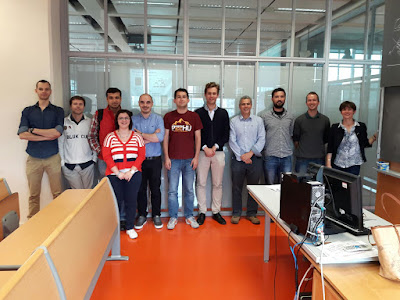
In true sense, it was a ROCKing weak. Prof Barbera started with brilliant
comprehensive lectures on the basics of rock mechanics covering the
geotechnical models, discontinuities, mechanical characterization of intact
rock and rock mass and classification. She further took us to the Politecnico
di Torino Geotechnics and Rock Mechanics laboratory DIPLAB (DIsaster Planing
LABoratory) where we saw an army of triaxial apparatus for different requirements
of tests apart from other soil and rock testing equipment. What intrigued us
was the direct shear test machine for snow which was developed in PoliTo. We
were also trained in DIPS software in the LAIB practising on a real time data
provided by Prof Barbara. Prof Migliazza focussed on moderately fractured and
jointed rocks in her lecture on unstable block analysis. She covered
discontinuity surveys by classical methods and most advanced methods like
Digital Surface Modelling by photogrammetry, laser scanner etc., by showing us
results from actual projects comparing both systems and procedural approach of
advanced methods.
Further Dr Russo introduced us various Geomechanical classifications
studies on rock mass and their application in prediction of excavation
behaviour and design choices and calculations. His lecture was beautifully
structured into step-by-step methods of classifications by different authors
from Terzaghi (1946) to Palmstrom (1995)’ He also explained us the most
inclusive and widely used method in Geodata for Simplified approach for a
preliminary setting of excavation behaviour formulated by him, GD
Classification Rosso 2007 by involving us in classroom exercise. His lecture
also presented a cross-checking of the reliability of the multiple graphs by
documented Case-Histories. He shared with us alarming videos showing different
types of rockbursts from various tunnelling sites around the world.
This week though being intensive and exhaustive ended with another
brilliant lecture from where he introduced us different types of supports for conventional
tunnels laying a great foundation for the lectures to follow. Prof peila
discussed different types of rock bolts and shotcrete and the necessary aspects
to take care while designing these support systems.
















